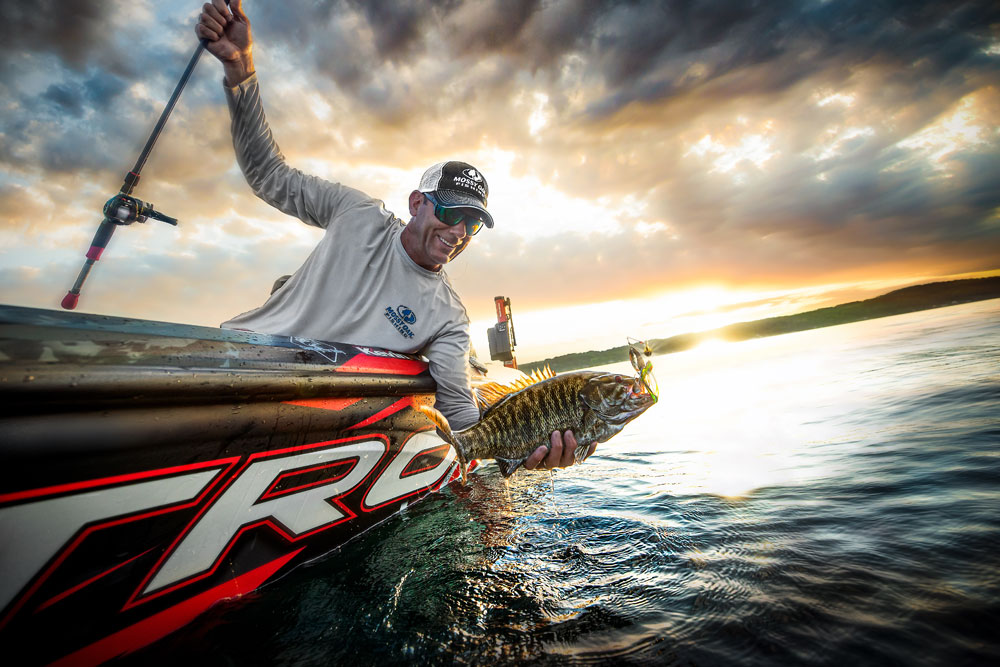When asked to analyze what causes him to win so many bass tournaments – especially big ones – Kevin VanDam named these factors as controlling whether he wins or loses.

In a tournament, the number-one thing I do is control all the things I can control and don’t let the things I can’t control ruin my day of fishing. The other key to my success at bass fishing is my ability to make changes on the water when I see changes happening. Once there’s an increase of current that may cause the bass not to be where I’ve found them an hour before, then I need to be willing to leave that spot and search for places where that current change has caused the bass to most likely be.
Understanding the shad spawn is also another factor that has helped me win several tournaments. If I’ve been fishing early in the morning when the shad are spawning in shallow water and catching a lot of good, keeper-sized bass during a 3-4 day tournament, and then on the next day I don’t catch as many bass as I have the first day fishing shallow, I may only spend a few minutes to fish shallow for those spawning shad. Then I’ll move out to deeper water because the bass and the shad probably are moving out to deeper water. There’s a big temptation when you’re catching many nice-sized bass during the shad spawn to return to those same regions for several days, not realizing that when you’ve caught a number of good-sized bass that you’ve been fishing the tail-end of the shad spawn. Each day fewer shad are spawning, and more of the big bass are moving offshore. Then you need to switch your fishing from shallow-running baits to deeper-water lures, as the shad move out to the deeper water. When the temperature drops several degrees, the bass are in fairly deep water, and because of the temperature change, they’ve moved deeper. If you don’t move deeper with them, you can’t continue to catch keeper bass.
Many elements impact the bass, causing them to be where they are. Once the elements change, you have to be willing to change with them to continue to catch bass. The faster you can determine what’s happening once the bass quit biting where you’ve been fishing, the quicker you can learn where the bass have gone and why. That’s why I don’t pre-fish as much as some anglers do. Water and weather and fishing pressure change day by day – and sometimes even hourly. The sooner you can switch your location to fish where the bass are most likely to be, the quicker and easier you’ll continue to catch bass. So, be aware of what’s happening around you to consistently find and catch more bass.






























